ABC’s flagship NYC station gets architecturally-based, brand-driven set
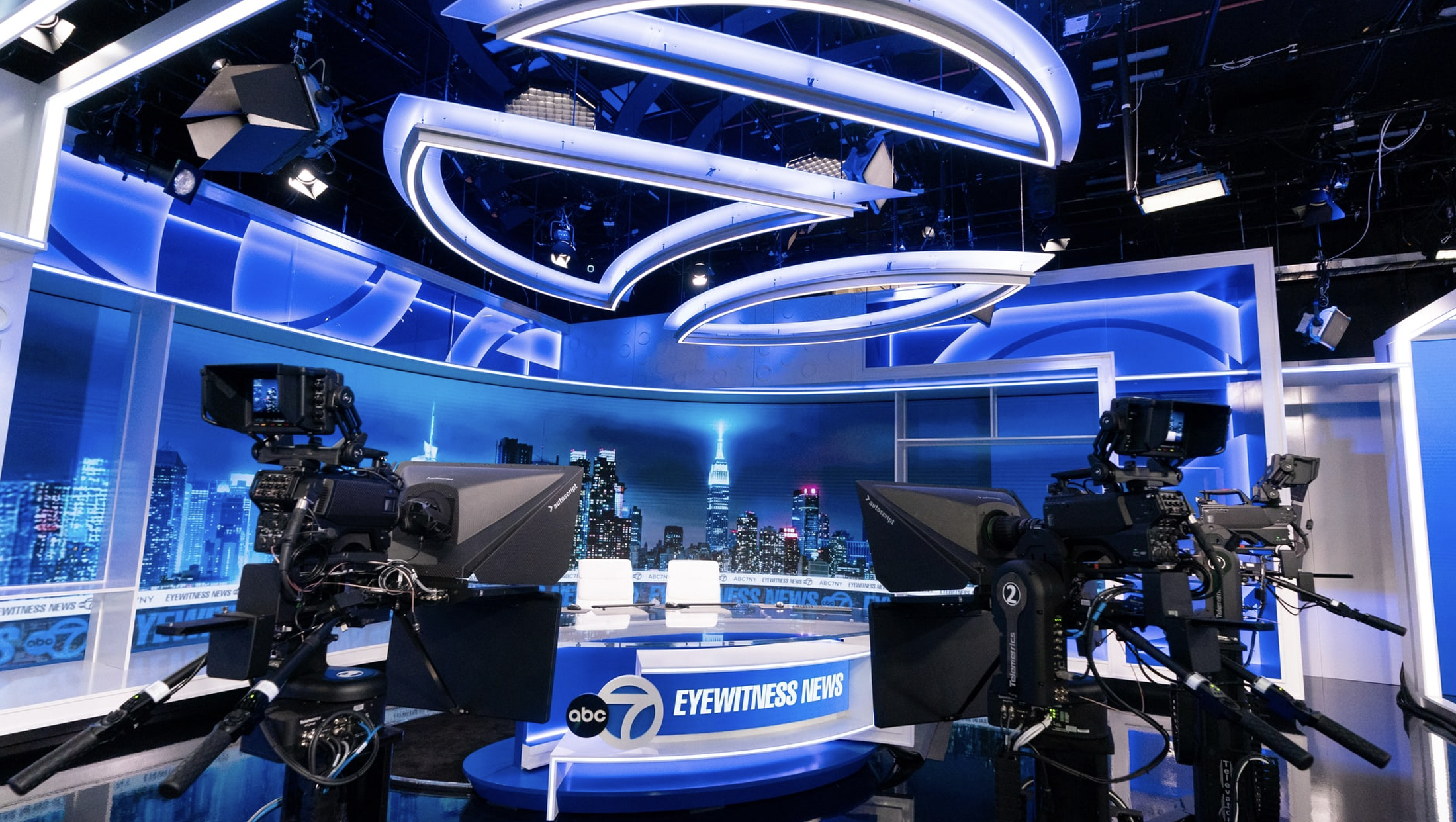
Weekly insights on the technology, production and business decisions shaping media and broadcast. Free to access. Independent coverage. Unsubscribe anytime.
The new home for WABC’s “Channel 7 Eyewitness News” combines Clickspring Design’s trademark architecture-centric approach with clever hints of the station’s brand — all selected to resonate with its viewers and showcase the station’s well-known symbols.
“Our new facilities in the state-of-the-art complex at 7 Hudson Square are perfectly designed to help us meet the demands of a complex multiplatform media landscape – enabling greater innovation, collaboration, operational efficiencies and partnership across the company,” said Marilu Galvez, president and general manager of WABC.
In the nation’s top media market, each of the stations affiliated with the big three networks feature anchors seated in front of seamless video walls (WABC also used one at its old studio), so using architectural concepts not only aligns with a key vein of Clickspring’s design philosophy but also gives viewers a space that still feels grounded in reality and stands out among rivals.
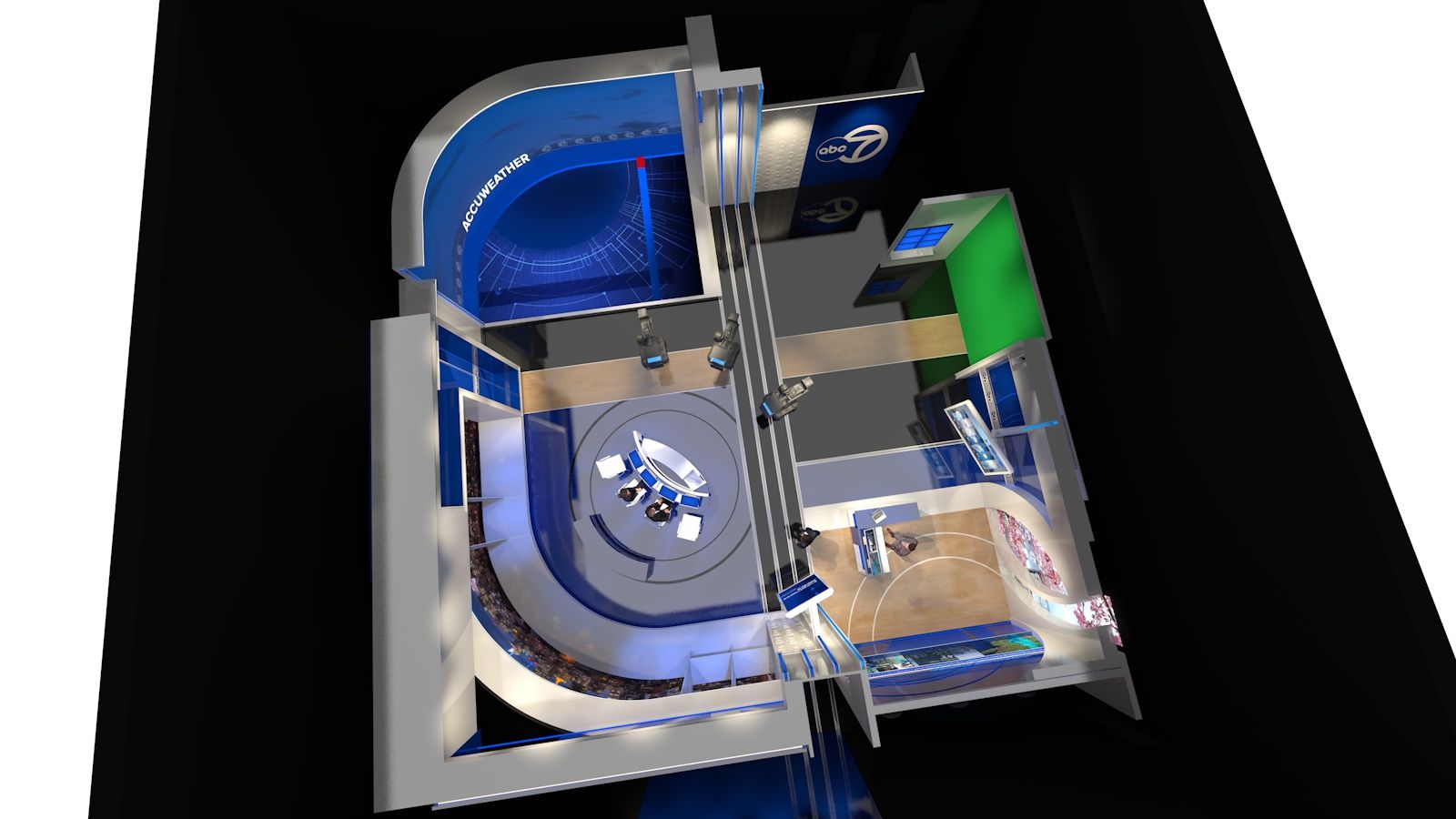
Birdseye render of the new studio.
“We really try to come to the table thinking of it as if it’s an architectural space that feels interconnected and holistic,” said Emmett Aiello, senior vice president of design at Clickspring.
Ultimately, the Clickspring team was able to give WABC the flexibility and feel of a video wall background but also — by framing it with a curved, deep surround and matching mullions juxtaposed with rectilinear header elements and vertical sidewalls — to still reinforce the idea that the studio set is a real environment.
The use of the mullions allows the station to give viewers the notion of a window with some structure to it but still to leverage the video wall for standups and field tosses on the camera right side, thanks to those carefully delineated smaller segments.
While much of this area, along with the structure of the front of the anchor desk, also draws connections to the “bento box” look found in parts of the ABC stations group graphics package, the notion for them came about separately.
The rectangular header and side elements that outline the video wall in the anchor area were given a glassy, layered treatment. The look, with oversized frosted circle shapes inspired by the Circle 7 logo that bleed off the panels, was made with acrylic. This elements have been outfitted with edge lighting to bring out those circular details, while the Clickspring team backed this with a solid, blue painted wall with additional lighting a foot or two behind this to add depth behind the surfaces.
The lighting in these two elements can be controlled independently, opening the possibility for shifting to different looks, especially when combined with different grid lighting cues and video wall graphics changeouts.
The “sweeping” look of the main video wall was carried through to the main anchor desk.
“We very specifically wanted a nice sweep to kind of come through and actually kind of penetrate those shapes, which we did with the kind of main wall,” explained Aiello, adding that the desk combined with concave and convex elements, creating a “dynamic way the shapes play against each other.”
The desk also features an LED ribbon sitting along the back of a deep cubby of sorts — another indirect reference to that bento box theme that also brings in another architectural element to the desk instead of just fronting with a swath of video walls.
Despite the solid structural feel the anchor desk conveys, it’s also wild and can be moved out of the way for a less formal look, such as during the station’s 10 a.m. newscast.
The pinstripe structural element that goes up one wall of the studio, runs down the center and then returns to ground level on the opposite side of the set before being mirrored on the floor surface continues the architectural approach. It was also envisioned as a way to create cohesion between various venues through more structure.
“At the very beginning, we looked at some New York City subway maps, and we liked the idea of these intersecting, weaving lines,” said Aiello. Instead of going heavy handed with that visual, however, Clickspring streamlined the look and incorporated the concept throughout the space. “You can see in a lot of the walls; it sort of weaves all the way around and sometimes it comes down and others it comes across.”
Despite all of that striping and the rectangular looks, the final set also skillfully blends in a variety of circular elements designed as a nod to the footprints of WABC’s venerable “Circle 7” logo and the ABC “dot” icon.
Perhaps most obvious is the sculptural element suspended over the main anchor desk that is a sort of deconstructed take on the station’s Circle 7 logo. “We were trying to do something kind of unexpected and fun here,” Aiello explained. “It can be tricky because you have to make sure the lighting designer can do their job, but, ideally, by bringing some design elements into the ceiling it pulls your eye up over the space.”
The final look of this element was centered around creating an abstract interpretation of the iconic mark that bridges the gap between obviousness and subtleness.
“The trick is to do something that’s abstract enough,” explained Aiello, adding that, while there are still full ABC 7 logos in various parts of the final build, this approach allows designers to use a broader interpretation of the logo without getting too close to creating issues with brand standards.
Clickspring took this idea and ran with it, creating oversized takes on the Circle 7 in the weather center by allowing strategically-placed LED tiles to peek through curved segments that have a unique shape of their own in tighter shots but, when viewed wider, form a definite suggestion of the numeral. These occupy one wall while the rest of the area sports glassy walls with oversized rings and curves that can be read as either parts of the logo or radar pulse rings.
Ultimately the goal was to incorporate multiple visual references that feel connected to the Circle 7 logo in more abstract ways that still give viewers a chance to discover it’s actually part of a bigger element with more concrete connections.
“We’re always looking for different ways to incorporate the brand mark,” said Aiello.
In addition to the “7” shapes, circles in general were also used as a textural element in various parts of the set, including on white walls with multiple variations. The weather center’s footprint is roughly defined by a circular mark as well.
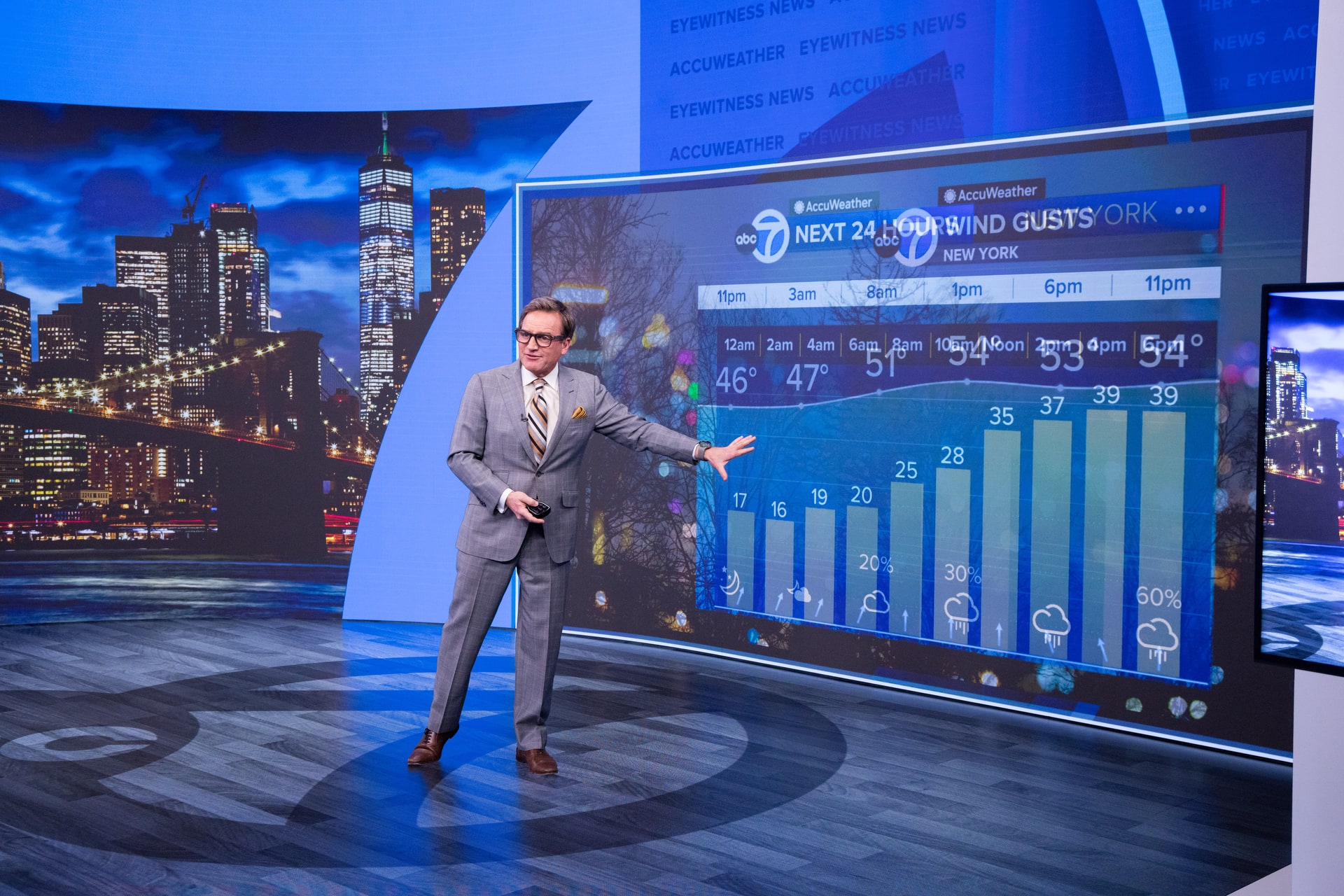

WABC’s LED volume with a virtual set extension of sort and simulated video screen and digital wood floor being fed to the myriad of LED panels for this weather segment.
The anchor desk’s position also allows anchors to interact with talent in both the weather center and the LED volume — complete with floor tiles — in the opposite corner of the studio, which is a new take on the “Big Board” concept that was previously a single touchscreen.
While the potential for this area is practically unlimited, the station also has the option to fill it with elements that feel like virtual set extensions, creating an alternative to delivering forecasts from the key wall.
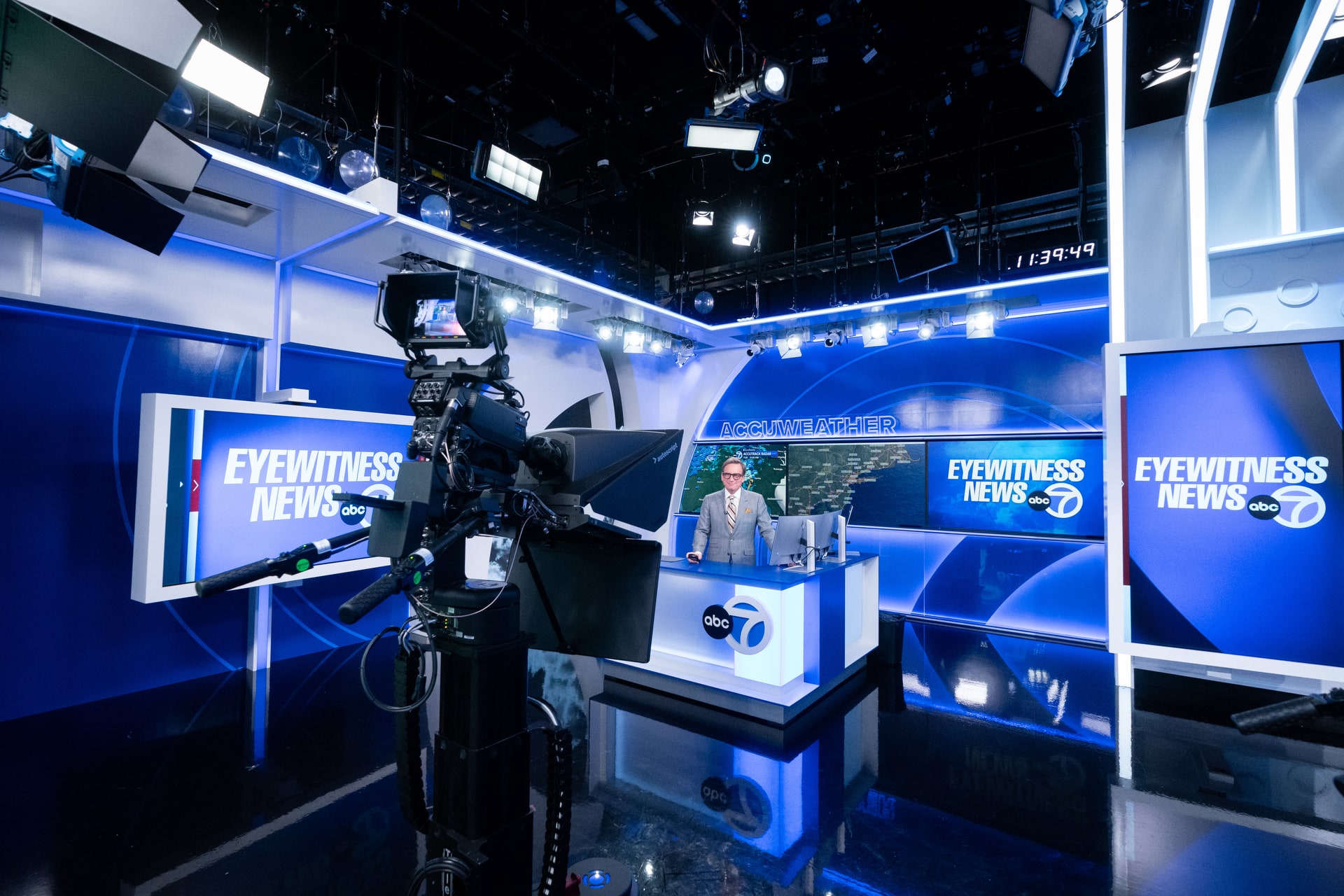

In addition to the main studio, Clickspring also created an alternate and flash cam setup next to the station’s sixth floor newsroom.
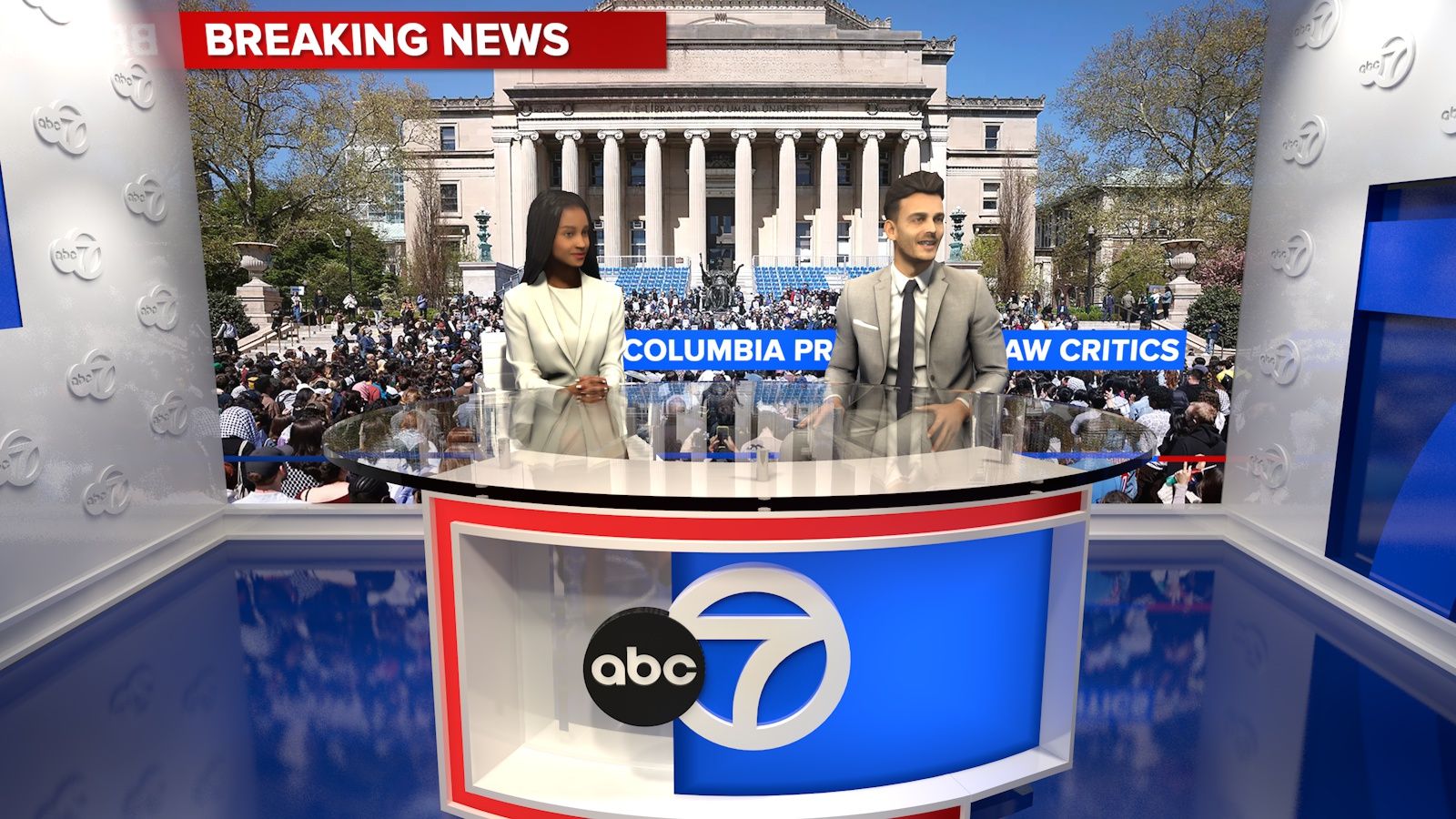

Alternative studio setup off the newsroom that can be used as an alternative venue or in the event of breaking news.


Also in the newsroom is this second working weather center, which will likely come in handy when keeping viewers informed of severe weather quickly.
This alternative studio alcove space sports two video walls along with a scaled-down anchor desk and separate weather presentation pod — which notably contrasts the curves in the anchor desk, along with smaller scale interpretations of the Circle 7 logo and oversized “7”-shaped elements on the walls.
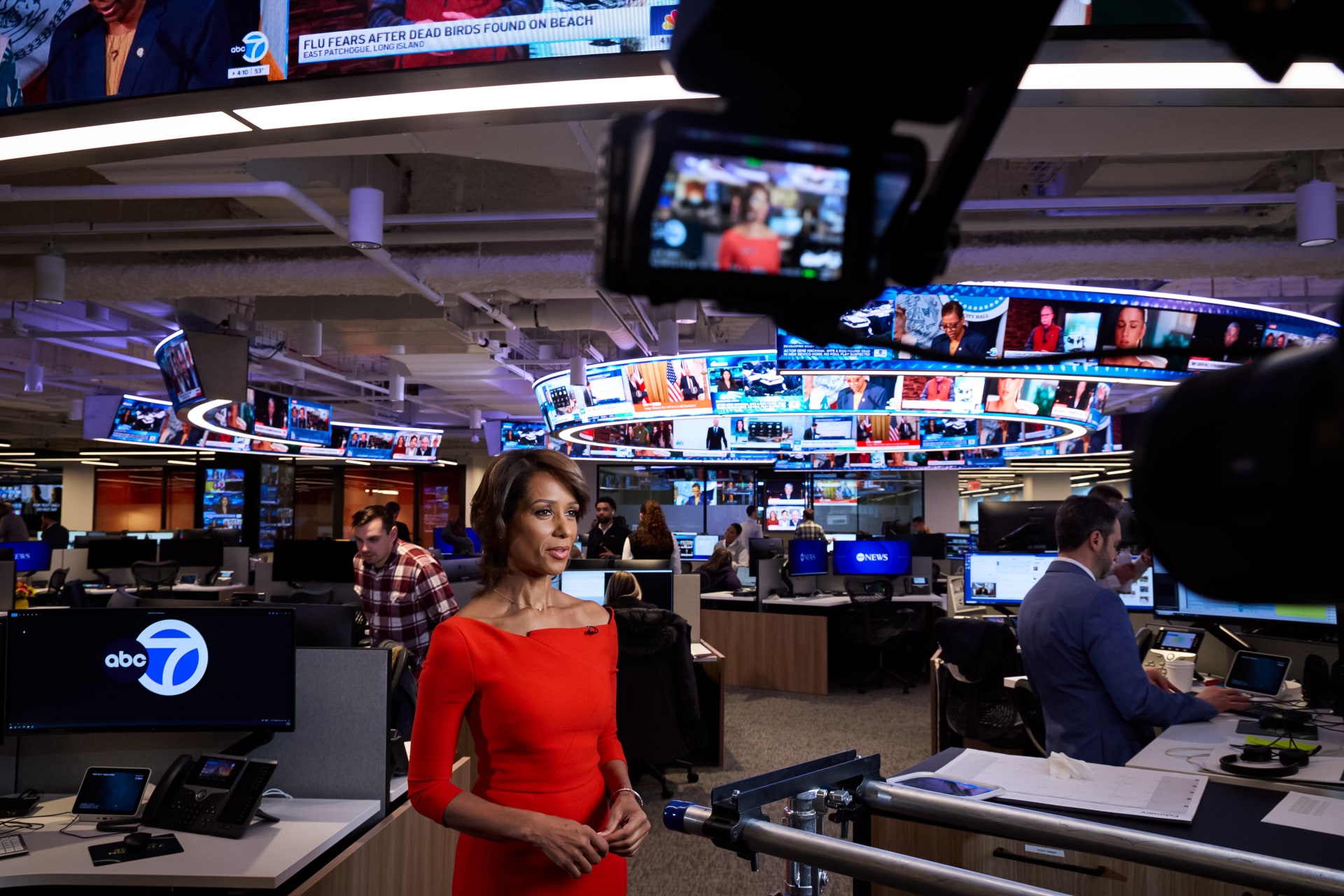

The station’s new newsroom on the sixth floor also includes an additional standup position, which showcases a sophisticated series of curved, ceiling-mounted LED panels that allow staffers to monitor what’s going on from numerous sources.
A third studio, 4F, will become home to the station’s “Here and Now,” “Tiempo” and other productions, with neighboring 4G kept as a more flexible space for topical shoots, special productions and promos.
WABC’s new home was part of the ABC’s move into the Robert A. Iger Building, also known as 7 Hudson Square. There are still multiple projects in the works before the building is fully set up, which Disney hopes to finish by this summer.
“The state-of-the-art facility is designed to reinforce our commitment to providing reliable news coverage ensuring that we can continue to reach our viewers anytime, anywhere, and on any device,” WABC told NewscastStudio in a statement. “We also want our audience to engage with and enjoy the news we provide. We have put a significant amount of thought into the aesthetics and atmosphere of this space.
Project Credits
- Set design: Emmett Aiello, Christine de Witte, Corey Atwood for Clickspring Design
- Lighting design. Phil Widmer, for ABC
- Set fabrication: Project Manager Pat O’Donnell for ShowFab
- AV integration: Fuse Technical Group
- LED: DetaiLED Solutions
Photos courtesy WABC. Renderings courtesy Clickspring Design.
Correction: An earlier version of this article misstated the designer of the sixth floor newsroom LED installation. The story has been corrected.


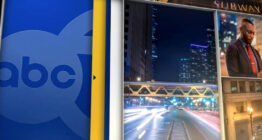

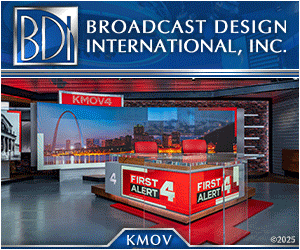
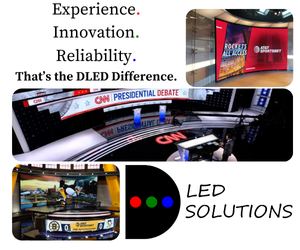
tags
7 Hudson Square, ABC Studio 4F, ABC Studio 4G, Clickspring Design, De, DetaiLED Solutions, Emmett Aiello, Fuse Technical Group, Hudson Square, LED Floors, LED Volumes, Marilu Galvez, Pat O’Donnell, Phil Widmer, ShowFab, ShowFab, wabc
categories
Broadcast Design, Broadcast Industry News, Broadcast Lighting Design, Heroes, Local News, Set Design